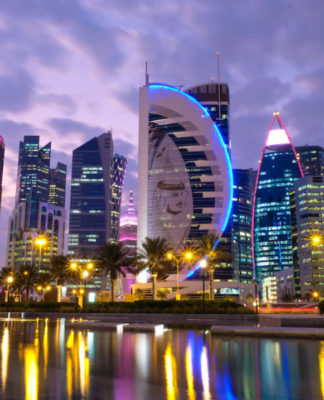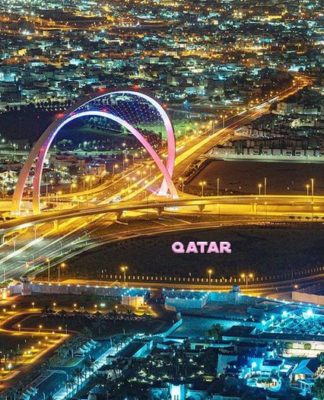ENERGY TRANSITION
What is energy intensity and why is it vital to our net-zero goals?
Jun 13, 2023
Energy intensity is a measure of economic reliance on energy consumption.
Image: Photo by Fré Sonneveld on Unsplash
Roberto Bocca
Head of Energy and Materials, Member of the Executive Committee , World Economic Forum Geneva
Ewan Thomson
Senior Writer, Forum Agenda
Share:
OUR IMPACT
What’s the World Economic Forum doing to accelerate action on Energy Transition?
THE BIG PICTURE
Explore and monitor how Energy Transition is affecting economies, industries and global issues
A hand holding a looking glass by a lake
CROWDSOURCE INNOVATION
Get involved with our crowdsourced digital platform to deliver impact at scale
Stay up to date:
Energy Transition
This article is part of:
Centre for Energy and Materials
Listen to the article
7 min listen
The world has embarked on a decarbonization journey that must run alongside population growth, economic growth, and the near-doubling of our global GDP between now and 2050.
A key challenge is how we help economies to continue to grow, while simultaneously reducing our emissions.
Here’s why we need to understand the vital role that energy intensity plays in our global decarbonization and economic growth goals, and how we can reduce it.
We need to talk about energy intensity.
The progress of our global journey to net-zero emissions is unfolding in the news every day, detailing breakthrough inventions, promising decarbonizing technologies, new renewable energy projects and laws and policies that facilitate the energy transition.
But energy intensity, which is a key component of measuring our pathway to net zero, is a lesser-known concept – one that I believe we should all understand better.
Energy is just a means to an end, be that heating, cooling, moving, or producing. The big question is, can we develop different processes and different products that give us the same benefits while consuming much less energy, all while supporting a growing population and economy?
That’s the challenge. And the answer lies in looking at how we can be smarter in the way we consume energy, not just how we produce it.
Here’s why energy intensity matters and why reducing it is vital in reaching goal 7 of the UN’s Sustainable Development Goals (SDG).
What is energy intensity and why is it so important?
Energy intensity is the quantity of energy used to produce one unit of GDP. The higher the intensity, the more energy we use in the process to produce a product or service.
Measuring energy intensity helps us to understand the way we are using energy. There are multiple opportunities to reduce energy intensity; the most commonly understood is energy efficiency.
Being efficient with energy means we need less of it, which means we optimize the existing processes so we don’t need to create as many renewable energy projects on our path to net-zero emissions. It’s so important that Fatih Birol, Executive Director of the International Energy Agency, says energy efficiency is the world’s “first fuel”, and the main route to net zero after supply-side measures.
Calculating the energy intensity at a company or country level can help monitor changes in energy intensity over time, and so can help organizations to set targets and policies. It can also allow for comparative analysis across different sectors, which can help identify best practices and areas for improvement.
The good news is that energy intensity is already falling thanks to efficiency improvements. However, we have to accelerate the decline even further – intensity will need to drop by 3.2% per year to be on track to reach the UN’s SDG targets from an annual average fall of 1.9% in 2010-2019.
Graph measuring the energy intensity in terms of primary energy and GDP.
Energy intensity will need to drop by 3.2% per year to be on track to reach the UN’s SDG targets. Image: IEA
Why do we measure energy intensity?
Almost every time we produce energy, we are using up non-renewable resources and generating greenhouse gases (GHG). For example, even wind turbines – which produce renewable energy – still use up non-renewable resources, be that the steel and other materials required to make them, the land that they occupy, or the infrastructure required to transport them.
Adding renewable energy sources to our energy supply is important, but by only measuring the quantity of energy produced, we are not measuring the energy used to extract, produce, transport and dispose of the components used to make the wind turbine.
By considering energy intensity instead, we can identify opportunities to reduce emissions throughout the entire lifecycle, including supply-chain optimizations and circular economy approaches.
Reducing energy intensity will also provide more opportunity for energy access for those people who do not have it yet.
Emerging economies will grow, and demand for sustainable and modern energy is going to increase in those economies. If we can develop those low-intensity products and processes and accelerate efficiencies compatible with a substantive reduction in energy intensity, we will enable a just energy transition for all.
Have you read?
You can cut carbon emissions and grow the economy. Proof from the EU
6 key insights into accelerating the energy transition
Energy efficiency is finally turning a corner as the world tackles the energy and climate crises
Reducing energy intensity with knowledge sharing
Reducing energy intensity requires multiple initiatives to work holistically, but many are already in place; the next step is rolling out and scaling up, and knowledge-sharing initiatives are central to rapid progress.
It’s quicker and cheaper to share best practices than to have multiple organizations in the same sector doing the same work to reach the same goal. Governments, businesses and communities alike can collaborate and help each other reach energy intensity goals. The Forum is involved in this too – one example is we’ve helped set up an initiative for industrial clusters that allows companies to collaboratively shape their strategies and share lessons learned.
There are 18 industrial clusters across four continents that are part of the Net Zero Industrial Clusters initiative at the moment. The aim is to connect 100 industrial clusters globally to reduce 1.6 billion metric tonnes of CO2 emissions, retain and create 18 million jobs and contribute $2.5 trillion to global GDP, while transitioning to net zero.
DISCOVER
How is the World Economic Forum driving the energy transition?
The road to reduction
Accelerating the reduction in energy intensity is a challenge, but organizations that will be able to reduce their intensity will also reduce their costs, giving them an additional competitive advantage: lower cost and greener production.
The Forum’s white paper on securing the energy transition suggests 10 actions to align energy crisis responses with the energy transition, including energy demand management, while the IEA has a policy toolkit for governments, containing 10 strategic principles and a set of structural policy packages that can be integrated to deliver faster and stronger efficiency gains.
Energy intensity goes beyond mere numbers and statistics. It’s about comprehending how efficiently we use energy in our daily lives and industries. By striving for lower energy intensity, we can cultivate a greener, more prosperous future for generations to come.
Don’t miss any update on Energy Transition
Sign up for free and access the latest publications and insights across various topics.
License and Republishing
World Economic Forum articles may be republished in accordance with the Creative Commons Attribution-NonCommercial-NoDerivatives 4.0 International Public License, and in accordance with our Terms of Use.
The views expressed in this article are those of the author alone and not the World Economic Forum.






























